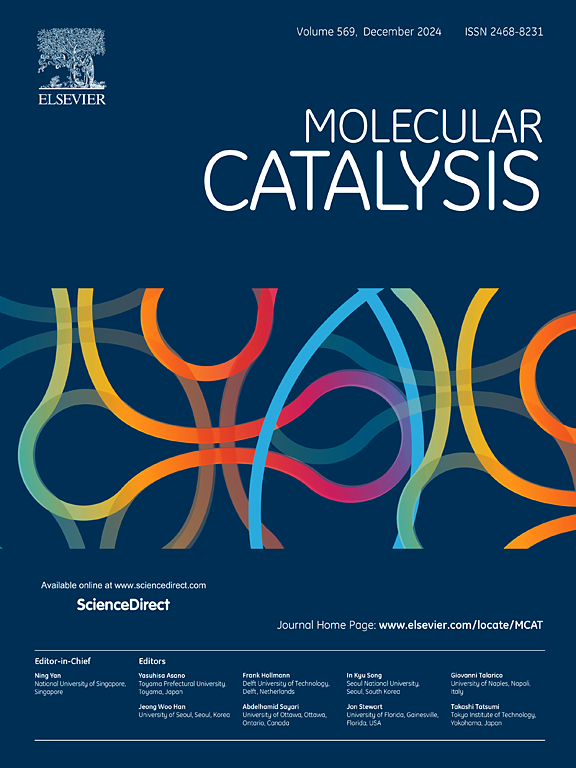Application of a carveol dehydrogenase from Klebsiella sp. O852 immobilized on magnetic gel for carvone production
IF 3.9
2区 化学
Q2 CHEMISTRY, PHYSICAL
引用次数: 0
Abstract
In this study, magnetic gel-embedded immobilized carveol dehydrogenase (Fe3O4@Gel@PEI@KlebADH1) was prepared and characterized by fourier transform infrared spectroscopy, scanning electron microscopy and vibrating sample magnetometer. The thermal and pH stabilities, storage stability, and kinetic parameters of Fe3O4@Gel@PEI@KlebADH1 compared to that of free KlebADH1 were investigated. Obtained results revealed that the Fe3O4@Gel@PEI@KlebADH1 exhibited enhanced stability and catalytic activity, with a superior thermal stability and broader pH range compared to free KlebADH1. After 8 days of storage, immobilized KlebADH1 still retained 69.60 % and 50.37 % of its initial activity at 4 °C and 30 °C, respectively, whereas free KlebADH1 merely retained 17.18 % and 1.97 % of its initial activity. Additionally, after 5 cycles of reuse, Fe3O4@Gel@PEI@KlebADH1 still maintained over 60 % of its initial activity, indicating its high reusability. Furthermore, carvone was produced using the Fe3O4@Gel@PEI@KlebADH1 as catalyst, and after optimization, the carvone yield reached 8.91 mM using 90 μg/mL Fe3O4@Gel@PEI@KlebADH1, 12 mM carveol and 2 mM NADP+at 40 °C for 12 h This study identified the potential applications of magnetic gel-embedded immobilized KlebADH1 for the production of carvone.

求助全文
约1分钟内获得全文
求助全文
来源期刊

Molecular Catalysis
Chemical Engineering-Process Chemistry and Technology
CiteScore
6.90
自引率
10.90%
发文量
700
审稿时长
40 days
期刊介绍:
Molecular Catalysis publishes full papers that are original, rigorous, and scholarly contributions examining the molecular and atomic aspects of catalytic activation and reaction mechanisms. The fields covered are:
Heterogeneous catalysis including immobilized molecular catalysts
Homogeneous catalysis including organocatalysis, organometallic catalysis and biocatalysis
Photo- and electrochemistry
Theoretical aspects of catalysis analyzed by computational methods
 求助内容:
求助内容: 应助结果提醒方式:
应助结果提醒方式:


